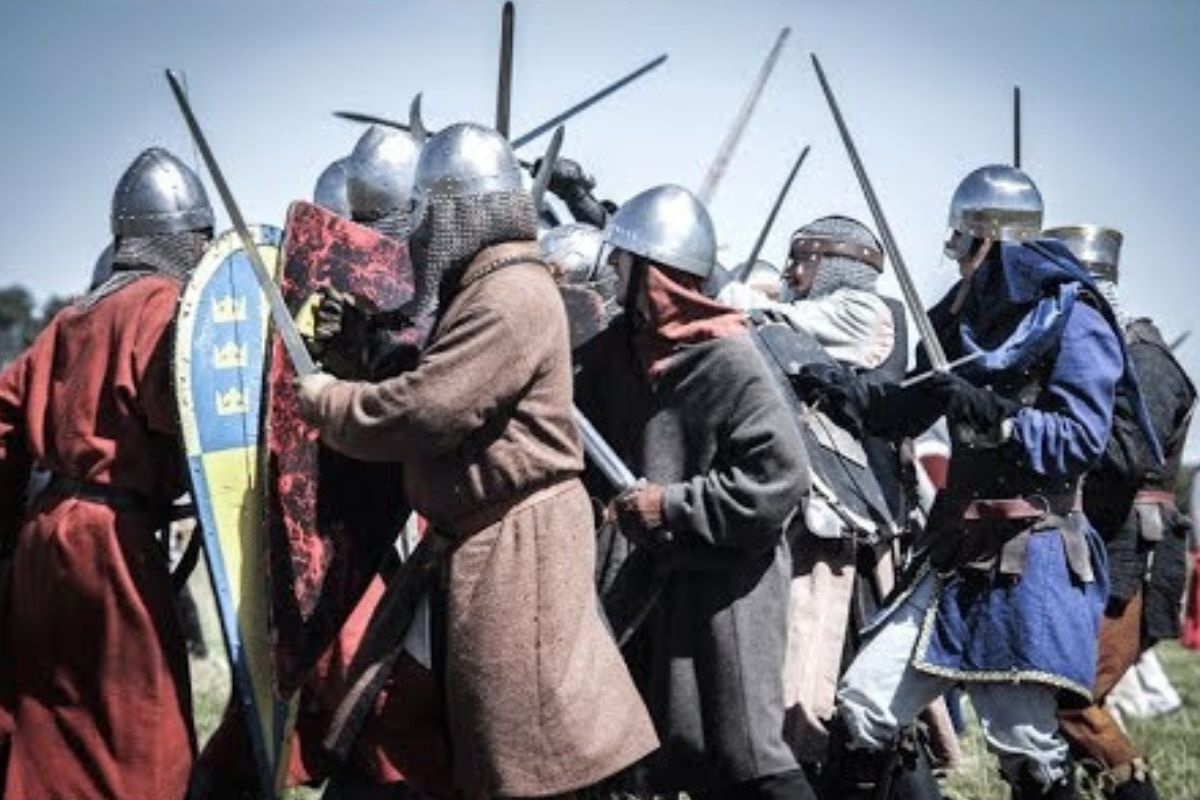
The Battle of Pontlevoy, fought on July 6, 1016, was a significant clash in medieval French history. This battle saw the forces of Fulk III, Count of Anjou, face off against Odo II, Count of Blois. Why is this battle important? It marked a turning point in the power struggle between these two influential counts. The outcome of this conflict had lasting effects on the balance of power in the region. Understanding the details of this battle helps us grasp the complexities of feudal politics and warfare during the early 11th century. Let's dive into 30 fascinating facts about the Battle of Pontlevoy that highlight its historical significance.
Key Takeaways:
- The Battle of Pontlevoy in 1016 was a fierce clash between powerful leaders Fulk III and Odo II, shaping the future of medieval France and highlighting the importance of strategic planning in warfare.
- Fulk III's victory at Pontlevoy solidified his control over Anjou, showcasing the impact of individual leadership and marking a turning point in the power dynamics of the Loire Valley.
The Battle of Pontlevoy: An Overview
The Battle of Pontlevoy, fought on July 6, 1016, was a significant conflict during the early medieval period in France. It involved two powerful factions vying for control and influence. Here are some fascinating facts about this historical event.
-
The battle took place near the town of Pontlevoy, located in the Loire Valley of France.
-
It was primarily a conflict between Fulk III, Count of Anjou, and Odo II, Count of Blois.
-
The battle is one of the earliest recorded large-scale battles in medieval France.
-
Fulk III, also known as Fulk Nerra, was a formidable warrior and strategist.
-
Odo II was known for his ambition and desire to expand his territories.
Key Players and Their Motivations
Understanding the key figures and their motivations provides insight into why the Battle of Pontlevoy was fought.
-
Fulk III aimed to consolidate his power and expand his influence in the region.
-
Odo II sought to assert his dominance over neighboring territories, including Anjou.
-
The rivalry between Fulk III and Odo II was fueled by longstanding animosities and territorial disputes.
-
Both leaders had substantial armies, composed of knights, infantry, and archers.
-
The battle was part of a larger struggle for control over the Loire Valley.
The Course of the Battle
The events that unfolded during the battle were dramatic and decisive, shaping the course of history in the region.
-
The battle began with a fierce exchange of arrows and projectiles.
-
Fulk III's forces initially faced difficulties due to the terrain and Odo II's strategic positioning.
-
Despite early setbacks, Fulk III managed to rally his troops and launch a counterattack.
-
The fighting was intense, with both sides suffering significant casualties.
-
Fulk III's tactical acumen eventually turned the tide in his favor.
The Aftermath and Its Impact
The consequences of the Battle of Pontlevoy had far-reaching implications for the region and its future.
-
Fulk III emerged victorious, solidifying his control over Anjou.
-
Odo II's defeat weakened his position and diminished his influence.
-
The battle marked a turning point in the power dynamics of the Loire Valley.
-
Fulk III's victory enhanced his reputation as a skilled military leader.
-
The battle demonstrated the importance of strategic planning and adaptability in medieval warfare.
Legacy and Historical Significance
The Battle of Pontlevoy left a lasting legacy and is remembered for its historical significance.
-
The battle is often cited as an example of early medieval military tactics.
-
It highlighted the role of individual leadership in determining the outcome of conflicts.
-
The battle influenced subsequent power struggles in the region.
-
Historians study the battle to understand the complexities of feudal warfare.
-
The site of the battle remains a point of interest for history enthusiasts and scholars.
Interesting Tidbits
Beyond the main facts, there are some intriguing details that add depth to the story of the Battle of Pontlevoy.
-
Fulk III was known for his ruthless tactics, including the use of psychological warfare.
-
Odo II's ambition led him to engage in numerous conflicts throughout his life.
-
The battle is sometimes referred to as the "Battle of the Counts" due to the high-ranking participants.
-
Fulk III's victory at Pontlevoy paved the way for his future successes and expansions.
-
The Battle of Pontlevoy is a testament to the turbulent and often violent nature of medieval politics and warfare.
The Battle's Legacy
The Battle of Pontlevoy left a lasting mark on medieval history. This clash between Fulk III, Count of Anjou, and Odo II, Count of Blois, wasn't just about land or power. It showcased the strategic brilliance and fierce determination of both leaders. The battle's outcome shifted the balance of power in the region, influencing future conflicts and alliances.
Understanding these historical events helps us appreciate the complexities of medieval politics and warfare. The Battle of Pontlevoy serves as a reminder of how individual decisions and actions can shape the course of history. Whether you're a history buff or just curious, these facts offer a glimpse into a pivotal moment that helped define an era.
So next time you think about medieval battles, remember the significance of Pontlevoy. It’s more than just a date on a timeline; it’s a story of ambition, strategy, and legacy.
Frequently Asked Questions
Was this page helpful?
Our commitment to delivering trustworthy and engaging content is at the heart of what we do. Each fact on our site is contributed by real users like you, bringing a wealth of diverse insights and information. To ensure the highest standards of accuracy and reliability, our dedicated editors meticulously review each submission. This process guarantees that the facts we share are not only fascinating but also credible. Trust in our commitment to quality and authenticity as you explore and learn with us.
